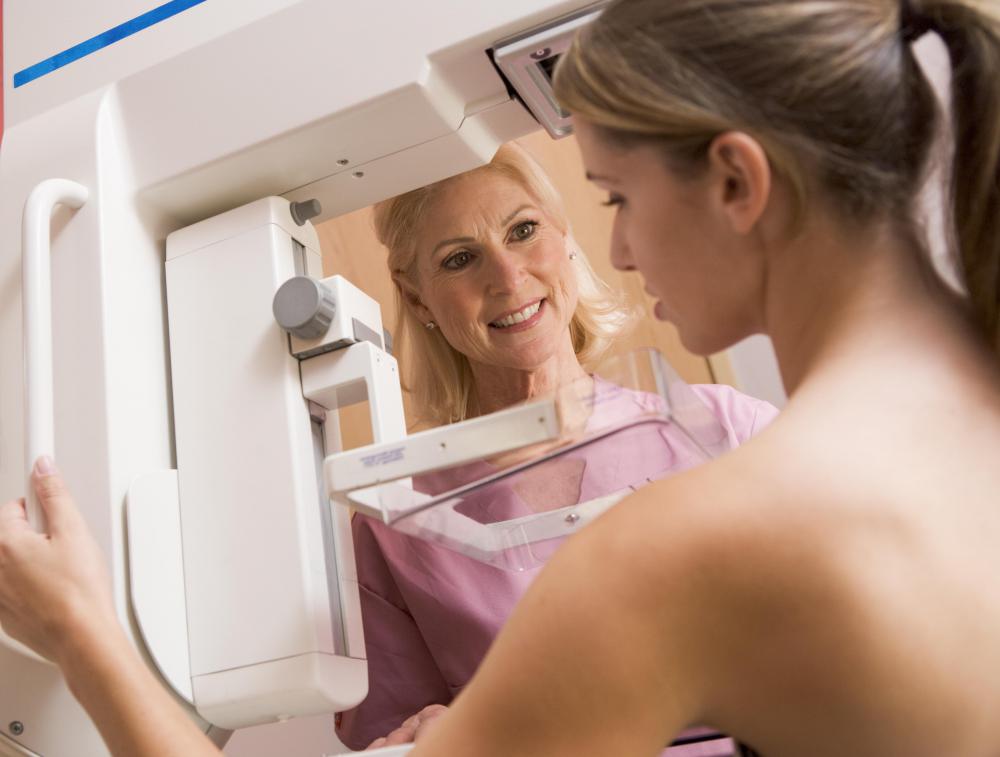At TheHealthBoard, we're committed to delivering accurate, trustworthy information. Our expert-authored content is rigorously fact-checked and sourced from credible authorities. Discover how we uphold the highest standards in providing you with reliable knowledge.
What is a Breast Prosthesis?
A breast prosthesis is a plastic form that serves as an aesthetic replacement after the natural breast’s removal, often due to mastectomy or lumpectomy. Such procedures tend to threaten a woman’s self-image, and the prosthesis may curb the psychological effects and reinforce her sense of femininity. Transgender and pre-op transsexuals often rely on forms to enhance their feminine illusion as well.
While made from many different materials, the most common breast prosthesis design remains silicone gel wrapped in plastic skin. Other forms are made from materials including foam rubber, fiberfill, or cotton. The non-silicone materials are lighter in weight and may be worn immediately after surgery. These forms also tend to offer more comfort for women who spend more time involved in outdoor activities.

The Silicone-based breast prosthesis offers a more realistic form. This material feels and moves more like a real breast. The silicone implant does weigh more, however, which can lead to shoulder strain. The extra weight can cause the wearer to feel more heat when involved in physical activity as well. Silicone prosthesis also may cost more, but can typically be custom fit to any wearer.
A partial breast prosthesis, also known as an equalizer, serves as a filler for partial breast removal, also known as a quandrantectomy. Designed from the same materials as a full breast prosthesis, these pieces can fit into both a normal or mastectomy bra.
Shelf bought breast prosthesis come in various shapes and sizes. Several vendors, including several online sources, offer a wide range of selections. Custom fit forms are designed from plastic molds taken from the breast by an anaplastologist prior to breast removal.
The prostheses attach to the wearer in two ways, either inserted into the clothing or strapped directly onto the wearer. Mastectomy clothing, which is designed to hold breast prostheses, ranges from bras to formal wear. Typically, mastectomy wear contains bilateral pockets that hold the prosthetic comfortably in place. The design of the clothing offers women a chance to preserve their feminine form. A contact prosthesis offers women the opportunity to bypass mastectomy wear. A combination of Velcro straps and adhesive straps allow women to attach the form directly to their bodies.
In order to further enhance realism, adhesive nipples can be attached to the form as well. Latex nipples require an adhesive glue to hold them in place and are often reusable. Silicone nipples are typically permanently attached to the prosthesis. Both types of nipples come in various sizes and colors.
In most cases, insurance companies will cover both breast prosthesis and post-operative clothing in cases of cancer. This remains dependent upon the individual insurance company and a patient's extent of coverage. Many community groups and hospital programs exists to assist women with prosthesis costs as well.
AS FEATURED ON:
AS FEATURED ON:











Discuss this Article
Post your comments